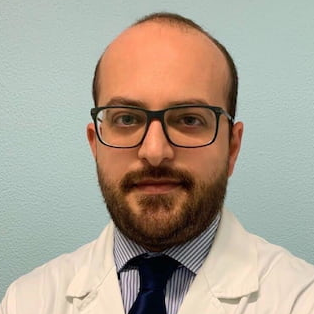Reproductive Surgery: Current Trends and Future Perspectives
A special issue of Journal of Clinical Medicine (ISSN 2077-0383). This special issue belongs to the section "General Surgery".
Deadline for manuscript submissions: closed (25 January 2024) | Viewed by 6017
Special Issue Editors
Interests: women’s health; gynecological oncology; minimally invasive procedures; up-to-date management; gynecology; reproductive health; surgery
Special Issues, Collections and Topics in MDPI journals
Interests: minimally invasive surgery; endometriosis; adenomyosis
Special Issues, Collections and Topics in MDPI journals
Special Issue Information
Dear Colleagues,
To date, reproductive surgery represents an important field of gynecology, aimed to preserve and restore the anatomy and functions of reproductive organs in both males and females. Indeed, several diseases such as endometriosis, adenomyosis, uterine fibroids, uterine malformations, pelvic inflammatory disease, and several other conditions may impair female fertility. These diseases are often found in women of reproductive age wishing to conceive; thus, fertility-sparing surgery is of paramount importance, and the surgeon dealing with them should be precisely trained for this purpose. In addition, the indications, timing, and techniques should be carefully evaluated and discussed with the patients, with or without subsequent assisted reproduction, especially using minimally invasive surgery (e.g., laparoscopy, robotic surgery, and hysteroscopy). In this regard, oocyte and ovarian tissue cryopreservation should be taken into account, especially when severe conditions, such as deep infiltrating endometriosis, are planned for surgical treatment. Finally, new perspectives are offered by novel approaches, from new instruments to innovative approaches such as uterine transplantation.
Considering these elements, the Special Issue “Reproductive surgery: current trends and future perspectives” aims to collect the most robust pieces of evidence about the topic and stimulate further discussion on future perspectives.
Dr. Antonio Simone Laganà
Dr. Mislav Mikuš
Guest Editors
Manuscript Submission Information
Manuscripts should be submitted online at www.mdpi.com by registering and logging in to this website. Once you are registered, click here to go to the submission form. Manuscripts can be submitted until the deadline. All submissions that pass pre-check are peer-reviewed. Accepted papers will be published continuously in the journal (as soon as accepted) and will be listed together on the special issue website. Research articles, review articles as well as short communications are invited. For planned papers, a title and short abstract (about 100 words) can be sent to the Editorial Office for announcement on this website.
Submitted manuscripts should not have been published previously, nor be under consideration for publication elsewhere (except conference proceedings papers). All manuscripts are thoroughly refereed through a single-blind peer-review process. A guide for authors and other relevant information for submission of manuscripts is available on the Instructions for Authors page. Journal of Clinical Medicine is an international peer-reviewed open access semimonthly journal published by MDPI.
Please visit the Instructions for Authors page before submitting a manuscript. The Article Processing Charge (APC) for publication in this open access journal is 2600 CHF (Swiss Francs). Submitted papers should be well formatted and use good English. Authors may use MDPI's English editing service prior to publication or during author revisions.
Keywords
- female infertility
- male infertility
- reproductive surgery
- endometriosis
- uterine fibroids
- uterine malformations
- pelvic inflammatory disease
- fertility preservation
- fertility-sparing surgery
- minimally invasive surgery
- laparoscopy
- hysteroscopy
- robotic surgery
- assisted reproduction
- oocyte cryopreservation
- ovarian tissue cryopreservation
- uterine transplantation







